icon
password
Multi-select
tags
ID
type
status
slug
summary
category
date
Author
URL
#MiniSo is probably China's best-known retail brand overseas, with more stores overseas than all other Chinese retail brands combined. But many consumers may mistake it for being from Japan.
As of July 2020, a grocery store called MiniSo had opened nearly 5000 stores around the world. Of these, about 3000 are in Chinese mainland, while the remaining 1700 are in more than 80 countries outside China.
If you have ever been an overseas consumer of MiniSo, you will know that this is a very cheap grocery store. It sells chargers, pillows, paper towels, water cups, power banks, mirrors, and almost all the small products in life. These products have exquisite white packaging, Japanese design style and, more importantly, most of them cost less than $5.
Its name is reminiscent of the Japanese clothing brand Uniqlo, and the goods it sells are reminiscent of the Japanese brand MUJI. Some even call it MUJI CopyCat directly.
In fact, it is an orthodox Chinese company. Although it has an early history of plagiarizing MUJI, it is now erasing its notoriety.
“Japanese brand” from China
In 2013, MiniSo was founded in Guangdong Province, China, and its stores soon spreaded all over China.
It quickly succeeded in selling goods similar to those of the well-known Japanese brand MUJI at ultra-low prices, but this success had also been questioned by Chinese consumers.
From the appearance of the store, MiniSo looks like a combination of three Japanese brands, MUJI, UNIQLO and DAISO, but many of the Japanese texts on its products have grammatical errors. Is it a Japanese brand? Or is a Chinese brand disguised as Japan?
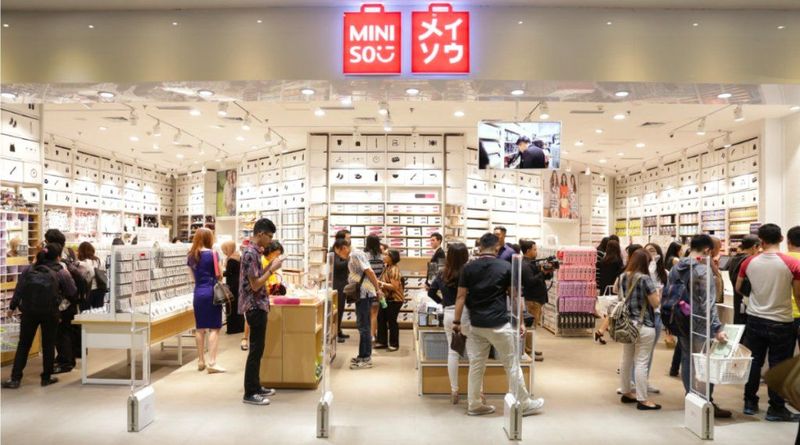
Logo with Japanese hiragana is hung on many stores of MiniSo.
The dispute was quickly settled in China, where it was found that the trademark MiniSo was registered in 2013 in China and 2014 in Japan. And, according to public industrial and commercial equity information, the ultimate controller of MiniSo is Ye Guofu, a Guangdong businessman, not a Japanese.
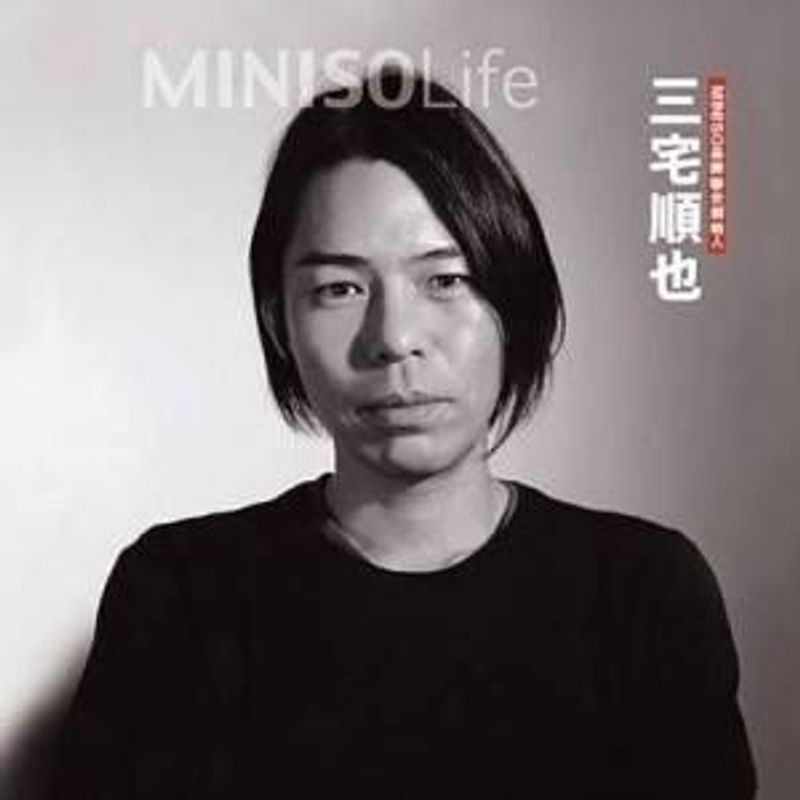
Miyake Junya
In MiniSo’s official profile, its main founder, Ye Guofu, was hidden, highlighted by a Japanese designer named Miyake Junya. But in fact, Miyake is only involved in the design of some miniso products as co-founder. In the Japanese media, there are many reports that “MiniSo is not a Japanese company”.
The only reason MiniSo initially disguised itself as a Japanese brand may have been to attract users to the store. Ten years ago, many Chinese brands did this. Because Chinese consumers at that time preferred foreign brands, even if a Chinese company made a good product, it could not attract consumers in the first place.
Another example is Genki Forest, a sugar-free beverage brand founded in 2016, which also disguised itself as a Japanese brand.
Later, in an interview, Ye Guofu explained the origin of the name and why the brand adopted the Japanese style.
MiniSo’s name came from the positioning of the brand. The stores of the brand are generally about 200 square meters, and the products sold are priced at about 10-49 yuan, giving people a sense of “Mini”.
Ye Guofu said that the main theme of Japanese design style was simple, pure and natural, this design style was easier to break through the barriers of language, nationality, country and culture, and was recognized by consumers in different parts of the world.
In order to get rid of the criticism of “plagiarism” and “pretending to be Japanese brands”, MiniSo has been working with many well-known international brands and images since 2016. Such as Hello Kitty, Pokémon, Pink Panther, Sesame Street, Marvel and Disney and so on.
You are reading Panda!Yoo
A blog about modern Chinese culture and consumption trends. If you are interested in Chinese food, drinks, games, movies, novels, dramas, please follow us.
Join 1,565 other subscribers
This not only makes consumers gradually forget its early experience of selling plagiarized goods but also makes consumers crazy. Because many consumers find that the joint products of MiniSo and international brands often maintain very low prices.
For example, a pillow you buy elsewhere may cost 50 yuan, while a Pikachu joint name pillow can be bought at MiniSo for 30 yuan. (the pillow is authorized).
This makes it impossible for fans of these well-known images to refuse.
The real birth story of MiniSo
Ye Guofu, the founder of MiniSo, was born in 1977 and his family was poor in his childhood.
He did well in his studies, but he didn’t even get a diploma from a technical secondary school because his family didn’t have the money to pay for the tuition.
Like most Chinese young people in the early days of reform and opening up, Ye decided to leave his hometown of Hubei to work in Guangdong in 1998. At that time, Guangdong was the most economically developed region in China, and the job market there was full of a large number of college graduates. For Ye, who has not graduated from a technical secondary school, it is extremely difficult to find a job.
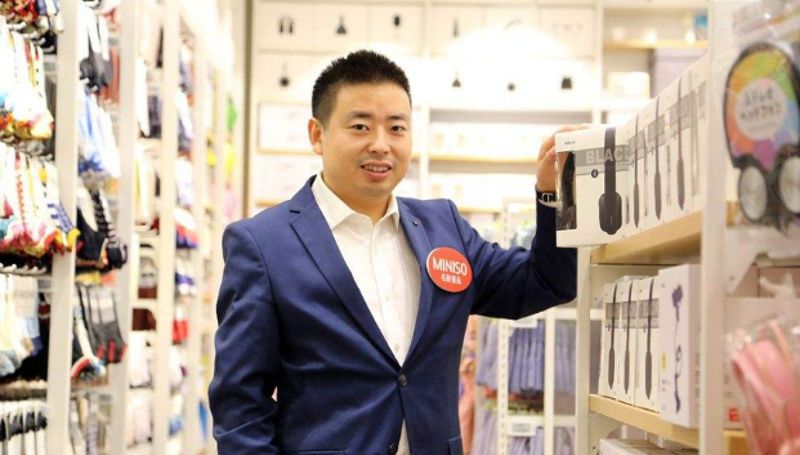
Ye Guofu, the real founder of MiniSo.
It took him three months to find a job in a steel pipe factory. He knows that the job is not easy for him, so he works very hard and has been studying in the factory workshop in his spare time. By the next year, he became the best salesman in the factory. With his own strength, he got a sales commission of 120000 yuan in that year.
Then Ye began his first attempt to start a business. He went to Fujian to set up a ceramic business with a friend he knew in his early years, but due to lack of experience, Ye and his friend spent all their savings and owed hundreds of thousands of yuan in debt.
After the failure of his first business, Ye went back to work as a salesman in a machinery factory. The job of selling is already familiar to him, and it took him only three years to pay off all his debts and gain some savings through his own performance.
Ye’s second venture was selling clothes in Foshan City, Guangdong Province. In the process of starting a business, his biggest gain was not to make money, but with a cosmetics saleswoman. Ye then married the saleswoman.
The acquaintance with his wife changed Ye’s business trajectory. His wife’s knowledge of the cosmetics industry enabled him to quickly open a number of cosmetics stores in Foshan, which had a good business and could sell 400000 yuan a year. Although this figure seemed inconspicuous today, it was still a huge sum of money in China’s third-tier cities in the early 21 century.
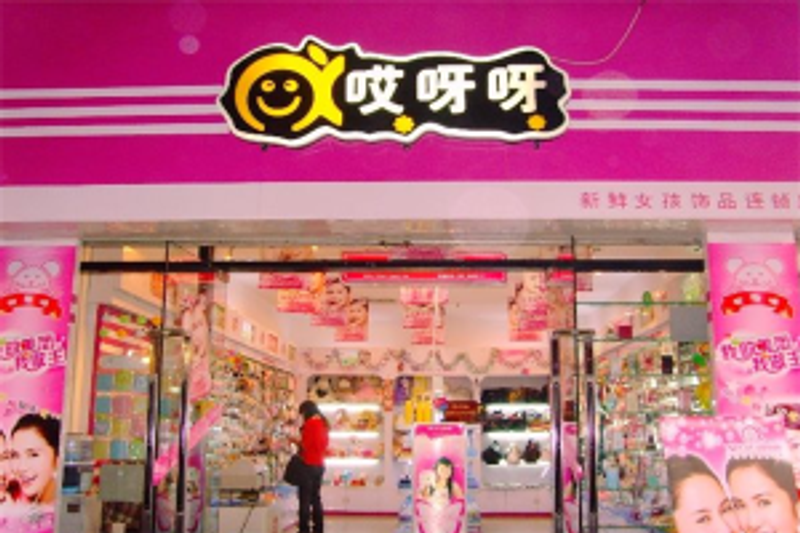
Before starting MiniSo, Ye’s other business, Aiyaya, had the style of a Chinese store in the 1990s.
At this time, one of Ye’s former employees returned to Foshan to talk to him about working in a “two-dollar store”(In China, this kind of store is called 10 yuan store ), which aroused Ye Guofu’s interest. After several visits, he used the money earned by the beauty shop to open a grocery store. The business of the grocery store was so successful that without any financing, he opened 400 grocery stores within a year, with total sales of 100 million yuan.
In 2003, there were many “two-dollar stores” in southern China, but there were few chain grocery stores. But Ye Guofu’s grocery store had a unified signboard and image, known as “Aiyaya”, which is the predecessor of “MiniSo”.
MiniSo was founded in 2013, and with Ye Guofu’s accumulation of grocery stores over the past decade, it quickly became a success in China and even overseas.
Why is MiniSo successful?
There is no denying that the rapid popularity of MiniSo has something to do with early plagiarism. But its success is not due to plagiarism.
In fact, when MiniSo first became popular in China, many other Chinese brands imitated MiniSo and launched more plagiarized brands. Those brands have products that are more like MUJI than MiniSo and lower prices than MiniSo.
But those brands soon disappeared from the market, and only MiniSo survived today and succeeded overseas. Although low prices are still one of the main reasons for attracting people to buy, when you walk into a MiniSo in 2020, it’s hard to see anything the same or similar to MUJI.
Contrary to what many people think, MiniSo spends a lot of money on research and development, and the products are updated very quickly. It almost never indulges in “classics”.
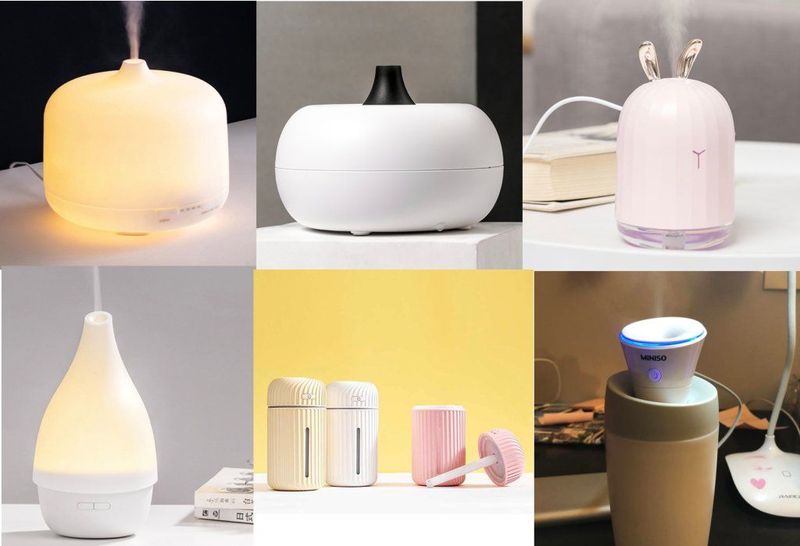
Of the six ultrasonic humidifiers sold by MiniSo, the one in the upper left corner is suspected of plagiarizing MUIJI.
When you mention MUJI, you may think of its humidifier. MUJI’s aromatic ultrasonic humidifier was invented in the 1980s and rarely changed significantly in the following three decades because it was popular with Japanese consumers.
MiniSo has sold more than six different ultrasonic humidifiers in the years since its inception. One of them was very similar to the classic MUJI model, but it was quickly removed from the shelves because it was not popular with Chinese consumers.
Different from Japanese enterprises, the advantage of MiniSo is the manufacturing advantage of Guangdong, China. There, all the plastics and appliances in life are updated on a weekly basis.
MiniSo’s Slogan in the English-speaking world is “Mini Price, Big Suprise”, which is actually not a slogan, but the business philosophy of the brand.
There are about 4,000 different goods in a MiniSo store, and there will be different goods in different MiniSo stores.
MiniSo uses a strict data-driven strategy to improve the product category, launching 2 or 3 new products in all stores every week, which also means that 2 or 3 old products will be removed from the shelves.
If a product does not sell up to expectations, it will quietly disappear from the MiniSo. If the new version of a product does not sell as well as the old one, it will not be updated in all stores.
Three award-winning products of MiniSo in 2019
Although some of MiniSo’s early products are similar to MUJI, these products are available in. In order to maintain this rate of update, MiniSo has formed a large team of designers, with an annual cost of about 100 million yuan on its own design. This enabled it to win if Product Design Award for several of its products in 2019.
But for MiniSo, design is not its end, but its means of commercial success.
[sociallocker id=”5614″]
Compared with other grocery stores and even MUJI, MiniSo has greatly increased the number of “repeat customers” through this update strategy.
Many consumers will not enter a chain grocery store for a second time after entering a chain store, because they have bought everything they want and know that there are no updated items for the time being. But consumers in MiniSo, will find brand new products every time they enter.
Only those items that are purchased frequently will become regular items in MiniSo, such as paper towels, cosmetic tampons, eyeliner and stationery. Consumers will be attracted to other items and then add these “the same consumables wherever they buy” to the shopping cart before checking out.
The strategy of co-signing with big brands mentioned above also allows MiniSo to get more repurchase rates.
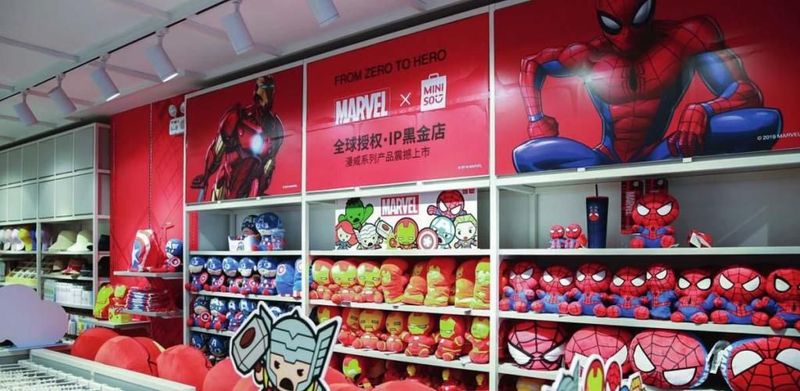
It is reported that during the cooperation with Marvel, MiniSo launched more than 400 joint merchandise. This accounts for 10% of all goods sold by MiniSo. This means that there is always something that consumers need.
In other brands, products co-branded with a well-known image tend to have higher prices, which means that consumers may no longer buy Spider-Man’s power bank after buying a Pikachu power bank. But in MiniSo, because all the goods are very cheap, consumers will not hesitate to buy them again when they encounter their favorite co-branded goods.
Of course, the low-price strategy has achieved greater success overseas.
It is neither the cheapest “made in China”, because you know that the cheapest Chinese goods are often sold through unsecured networks. Nor it is the best quality “made in China”, because the best factories in China tend to produce orders from the United States, Europe and Japan company, which will be affixed with the Logo of internationally renowned brands and high prices.
But you can imagine two curves, one is the rising quality, the other is the declining price, and the MiniSo is right where the two curves meet.
In essence, MiniSo is successful because it brings China to consumers as the most cost-neutral part of the “factory of the world”. Whether it is China’s own consumers or overseas consumers.
[/sociallocker]
- Author:NotionNext
- URL:https://pandayoo.com/2020/09/04/how-does-two-dollar-store-miniso-from-china-succeed
- Copyright:All articles in this blog, except for special statements, adopt BY-NC-SA agreement. Please indicate the source!